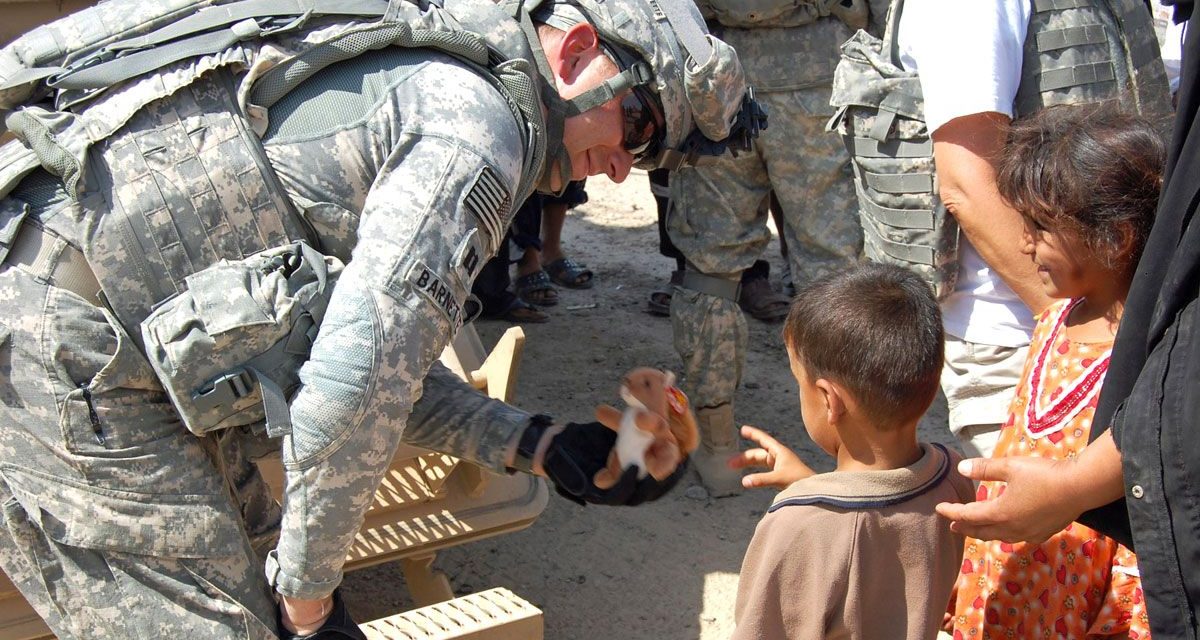How can the military and civilians work together to prevent or manage conflict? Two seminal policy initiatives, the Stabilization Assistance Review (SAR) and the Global Fragility Act (GFA), provide important answers by emphasizing an alignment of defense, development, and diplomatic efforts and delineating clear roles for respective actors in addressing violence and instability.
This episode examines how the SAR and the GFA have fundamentally reshaped the way the US government conceives and responds to conflict around the world based on lessons learned from places like Afghanistan and Iraq. One of the SAR’s most important contributions when it was released in 2018 was the establishment of a common interagency-wide definition of stabilization. To wit, “a political endeavor to create the conditions where locally legitimate authorities and systems can peaceably manage conflict.” Meanwhile the GFA codified many of the principles articulated in the SAR into law and appropriated specific money to pilot evidence-based approaches to conflict prevention and stabilization. But as our guests argue, the impact of these initiatives is not only felt in terms of how we approach conflict, but also supports other policy priorities like great power competition with China.
Dr. Frances Brown is a senior fellow and codirector of the Carnegie Endowment for International Peace’s Democracy, Conflict, and Governance Program. She previously served as director for democracy and fragile states on the White House National Security Council staff and managed stabilization and political transition programs in Afghanistan, the Middle East, and Africa for the US Agency for International Development’s Office of Transition Initiatives.
Pat Antonietti is the director for stabilization and peacekeeping operations policy in the Office of the Secretary Defense-Policy. Previously in OSD-Policy, Antonietti served as director for domestic counterterrorism, director for Middle East policy, and country director for Iraq. He is a retired Army officer, having served in multiple field artillery units in Germany, Kosovo, and Iraq, as well as serving as one of the first political-military planners for Afghanistan on the Joint Chiefs of Staff J5 after 9/11.
The Irregular Warfare Podcast is produced by the Irregular Warfare Initiative, a collaboration between the Modern War Institute and Princeton University’s Empirical Studies of Conflict Project. You can listen to the full episode below, and you can find it and subscribe on Apple Podcasts, Stitcher, Spotify, TuneIn, or your favorite podcast app. And be sure to follow the Irregular Warfare Initiative on Twitter.
Image credit: Sgt. Mary Katzenberger, US Army


If we look at such things as "conflict prevention" and "stabilization" through the lens of Samuel P. Huntington's famous "Political Order in Changing Societies" (see Page 41), then we can readily see that it is:
a. Our "development" initiatives,
b. Which are ultimately designed to transform other states and societies more along modern western political, economic, social and value lines,
c. That are the "root cause" of conflict and instability.
“The apparent relationship between poverty and backwardness, on the one hand, and instability and violence, on the other, is a spurious one. It is not the absence of modernity but the efforts to achieve it which produce political disorder. If poor countries appear to be unstable, it is not because they are poor, but because they are trying to become rich. A purely traditional society would be ignorant, poor, and stable.”
Even our own Joint Publication 3-22, “Foreign Internal Defense,” dated 17 August 2018, in Chapter II, “Internal Defense and Development,” at Paragraph 2, "Construct" — notes this same "cause" (our development initiatives) and "effect" (instability and conflict) relationship.
"a. An IDAD program integrates security force and civilian actions into a coherent, comprehensive effort. Security force actions provide a
level of internal security that permits and supports growth through balanced development. This development requires change to meet the
needs of vulnerable groups of people. This change may, in turn, promotes unrest in the society. The strategy, therefore, includes measures
to maintain conditions under which orderly development can take place.”
If you look at the problems facing the U.S./the West today — for example as described by David Brooks below — then you can see how such things as:
a. Our "development initiatives"
b. Undertaken in the U.S./the West today — for example, so as to better provide for and better benefit from such things as globalization and the the global economy (as with the less-developed world, requires certain political, economic, social and value change in the more-developed world also) —
c. How this has now resulted in instability and conflict now even in our own countries.
"What’s happening can only be called a venomous panic attack. Since the election, large swaths of the Trumpian right have decided America is facing a crisis like never before and they are the small army of warriors fighting with Alamo-level desperation to ensure the survival of the country as they conceive it."
(See Brooks' April 22, 2021, New York Times article "The G.O.P. Is Getting Even Worse.)
Robert Gilpin, in his 2000 book “The Challenge of the Global Capitalism: The World Economy in the 21st Century,” likewise describes this relationship between (a) global economy-required "development"/"change;" this, as (b) the ingredients (in this regard, see his discussion of "many losers" and "serious threat to traditional social values," etc., below) for instability and conflict:
“Capitalism is the most successful wealth-creating economic system that the world has ever known; no other system, as the distinguished economist Joseph Schumpeter pointed out, has benefited ‘the common people’ as much. Capitalism, he observed, creates wealth through advancing continuously to every higher levels of productivity and technological sophistication; this process requires that the ‘old’ be destroyed before the ‘new’ can take over. … This process of ‘creative destruction,’ to use Schumpeter’s term, produces many winners but also many losers, at least in the short term, and poses a serious threat to traditional social values, beliefs, and institutions.”